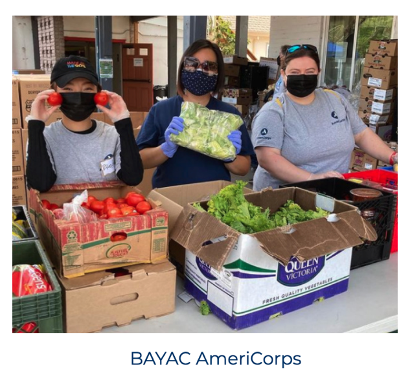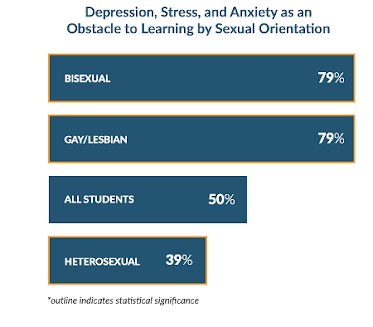By Sam Piha
“These [afterschool] programs are uniquely positioned to support and promote children’s healthy development, inclusive of mental health needs instigated by trauma. Children are not the only recipients; parents and the OST workforce can benefit from mental health supports provided directly or indirectly in these environments.” – Child Care Technical Assistance Network
In Part 1 of Youth Mental Health: What Can We Do in Afterschool, we explored which afterschool superpowers can be applied to address the youth mental health crisis. Below we offer additional ideas on how afterschool programs can lean into their strengths to improve youth mental health and COVID recovery. (Note: learning loss indicated by lower reading and math scores should not be the focus of afterschool.)
Predictability and Rituals
“Predictability, or being able to know what to expect, is an important ingredient for healthy development. Predictable routines and consistent relationships provide a foundation of trust and security for children. When children know what to expect and who they can rely on, they have the confidence to explore the world around them and develop new skills.” – Future Learn, Predictability and Development
Predictability reduces stress because children want to know what is going to happen next and what to expect. Familiar patterns are calming. This is especially true for young people who have experienced trauma.
“Provide a consistent, predictable pattern for the day. Make sure the child knows the pattern. When the day includes new or different activities, tell the child beforehand and explain why this day’s pattern is different. Don’t underestimate how important it is for children to know that their caretakers are “in control.” It is frightening for traumatized children (who are sensitive to control) to sense that the people caring for them are, themselves, disorganized, confused and anxious. There is no expectation of perfection, however, when caretakers are overwhelmed, irritable or anxious; simply help the child understand why, and that these reactions are normal and will pass.” - Dr. Bruce Perry, Importance of Predictability
When we repeat important activities on a regular basis, they become rituals that young participants can depend on. These activities include talking or check-in circles, particular ways that you always open or close the program, activities that acknowledge youth or staff that are departing the program, birthdays, etc.
“Predictability is a stabilizing force for teens, but it’s been disrupted by the pandemic.” - Teen Mental Health: A Vulnerable Stage of Life
To address COVID-19 isolation, afterschool programs can help by emphasizing activities that promote peer interaction. Activities include check-in circles, group play and games and group projects.
“The global pandemic, even though it affected all of us, especially caused children and teenagers to be isolated from their peers for prolonged periods of time—and especially during these developmental periods that they showed the most intense need for interactions with peers.” – Sarah D. Sparks, ED Week
It is important that youth understand that “mental health” does not mean “crazy”. They should understand that the impacts of COVID and isolation are real. These conversations can happen in group meetings and individual conversations.
“Youth express a collective desire – they even demand – that adults involve them in creating a more responsive education system so that they can, as one student put it, ‘find our way back to loving learning.’” – Youth Truth Survey
Young people want to be involved in a way that’s meaningful.
“ASK FOR STUDENT INPUT. The fact that we don’t even get a say in what we want to discuss ... is frustrating.” — 12th grade student
Consider training students to spot peers with mental health struggles and guide them to help.
“I wish the school did more to train and educate its students on how to identify ... warning signs of deteriorating mental health, abuse, self-harm, and violence within their peers - and respond appropriately and compassionately.” —12th grade student
“'Some students won’t get help because they’re just afraid to ask for it,' said Sofia, a senior at Davidson. 'But if a peer knows, and if their struggle is seen and heard, then they’re able to say, OK, yes, I do need the help. And we can get them to go to an adult themselves.'” - Students Train to Spot Peers with Mental Health Struggles and Guide Them
During the COVID shutdowns young people had few opportunities for exercise and playing with friends. It has been suggested that youth who suffered from COVID-19 isolation can benefit from physical exercise.
“At a time when recess and physical education programs may feel a squeeze from schools seeking more time for reading or math, studies suggest boosting students’ physical activity time also has an important role. It may help students rebound from the social isolation many have experienced during the pandemic.” – Sarah D. Sparks, Kids Are Feeling Isolated. P.E. May Help Them Bounce Back
 |
| Source: www.pexels.com |
We also know from research that free play and activities that introduce young people to the natural world are also healing. To learn more, check out our LIAS Blogs on Play and Nature.
“At Lawrence Family Development Charter School, Art, Music and Physical Education (Gym) are important to helping students interact with friends while participating in activities that take them away from desks and screens. These classes teach critical thinking, decision making and use a separate set of skills to interact with others. Gym in particular has an important role to play in helping children reduce anxiety and stress.” - Susan Dion Earabino, Ed.D, Principal at Lawrence Family Development Charter School
It is recommended that program leaders check with their schools or organizations to see if there are policies that lay out protocols for this. Many schools have IEP or Care Team meetings that identify strategies for particular youth who are experiencing problems. Afterschool leaders should attend these meetings as they have a unique perspective to bring.
Afterschool staff shall also receive training on when and how to collaborate with parents, the school and/or mental health professionals.
A Word About Confidentiality and Referrals
As you get to know young people in the program and they develop trust with you, many may share personal information, assuming it will be kept confidential. Older youth may feel safer knowing that you can and will keep their conversations confidential. However, there are certain times when you will not be able to keep confidentiality—such as when a young person lets you know that someone is hurting them, or that they are going to hurt someone else.
It is important that adult staff understand the legal reporting responsibilities regarding child abuse and endangerment. If your program is addressing personal, sensitive issues with young people, it is important to have a clear policy on confidentiality that you can share openly with participants. It is particularly important with adolescents that they understand you will respect their privacy, and that there are limits regarding ensuring their safety. There will be times when a young participant’s issues are beyond the scope of your program practice. It is important that staff members receive guidance on how to handle these situations and have access to their program supervisors to discuss situations where referrals to other professionals may be in order.
Play comes natural to kids and to out-of-school time educators! Research across youth development and education fields have identified principles that define playful learning and the positive youth outcomes that can come from intentional play. In this webinar, we will explore this topic and learn about free resources you can use to incorporate high-quality playful learning opportunities into your programs and how to advocate for more play in the lives of children.
Our featured speaker will be Dr. Carol Tang, the Executive Director of the Children's Creativity Museum, a member of LEGO's Playful Learning Museum Network. Tang is a Board Member of the How Kids Learn Foundation and the Association of Children's Museums. She previously led the Coalition of Science After School and was a program officer at a family foundation.
To learn more and register, click here.
































